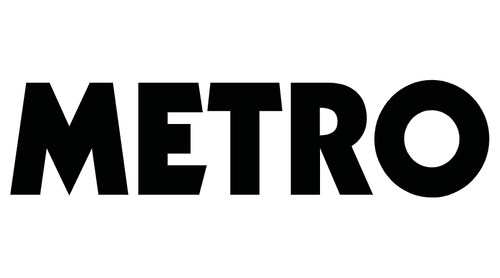

How Moon Worship Shaped Human Culture and Modern Practice
The story of humanity's relationship with the moon begins long before written history. Archaeological evidence, including lunar calendars carved into bone and antler from as far back as 32,000 BCE, suggests our ancestors carefully tracked lunar phases. The Lascaux cave paintings in France, dated around 15,000 BCE, include what researchers believe are some of the earliest lunar calendars, demonstrating how deeply rooted moon observation is in human culture.
The First Lunar Deities
Across ancient civilizations, the moon wasn't just a celestial body, it was divine. In Mesopotamia, the moon god Sin ranked among the most powerful deities. The discovery of the Ur-Nammu stele (circa 2100 BCE) revealed how Mesopotamian cultures built elaborate temples specifically for moon worship, with ceremonies timed to lunar phases.
Classical Civilizations and Lunar Knowledge
Egyptian Lunar Wisdom
The ancient Egyptians wove lunar observation deeply into their spiritual and practical lives. The goddess Isis, often depicted with a lunar crown, represented the moon's nurturing and transformative powers. According to the Egyptologist Richard H. Wilkinson's "The Complete Gods and Goddesses of Ancient Egypt," Egyptian priests used lunar phases to time sacred rituals and agricultural practices.
Greek Lunar Traditions
The Greeks associated the moon with Selene, Artemis, and Hecate, creating a complex tapestry of lunar symbolism that influenced Western esoteric traditions for millennia. The philosopher Plutarch's "On the Face in the Moon" (1st century CE) presents one of the earliest scientific-philosophical investigations of lunar phenomena, while still preserving its spiritual significance.
Medieval and Renaissance Developments
Lunar Medicine and Agriculture
Medieval European herbalists and healers, drawing from classical sources like Pliny's "Natural History," developed elaborate systems connecting lunar phases to healing practices. The influential 17th-century physician Nicholas Culpeper explicitly linked herbs and healing practices to lunar phases in his "Complete Herbal," a text that continues to influence modern herbalists.
Astrological Integration
During the Renaissance, lunar spirituality became increasingly sophisticated as it merged with astrological practice. Marsilio Ficino's "Three Books on Life" (1489) presented a comprehensive system of lunar magic that influenced both scholarly and popular practice throughout Europe.
Global Lunar Traditions
Eastern Lunar Practices
In Chinese tradition, the Moon Festival (中秋節) dates back over 3,000 years, celebrating the autumn harvest and lunar deity Chang'e. The Chinese lunar calendar, still used today for traditional festivals, represents one of humanity's oldest continuous lunar-based cultural practices.
Indigenous Lunar Wisdom
Native American traditions offer rich perspectives on lunar spirituality. The Algonquin tribes named each full moon according to seasonal characteristics, a practice now widely adopted in modern spiritual circles. The Lakota people's White Buffalo Calf Woman teachings include significant lunar elements that continue to influence contemporary Native American spirituality.
The Modern Revival
20th Century Resurgence
The modern revival of lunar spirituality gained momentum with the mid-20th century neo-pagan movement. Influential writers like Dion Fortune ("Moon Magic," 1956) and Aleister Crowley reintroduced lunar rituals to contemporary spiritual practice, albeit in modernized forms.
Contemporary Lunar Practices
Today's lunar spirituality has evolved into a diverse set of practices that blend ancient wisdom with modern understanding:
Modern Lunar Spirituality
Digital Moon Tracking
Modern practitioners use smartphone apps and online tools to track lunar phases and plan activities. Apps like Moon Calendar and Lunar Phase have millions of downloads, indicating the widespread interest in lunar timing in contemporary life.
Wellness and Self-Care Integration
The modern wellness movement has embraced lunar cycles as a framework for self-care routines. Many practitioners time their meditation, journaling, and intention-setting practices to lunar phases, creating a structured approach to personal development.
Contemporary Ritual Practices
Modern lunar rituals often focus on manifestation and personal transformation. Full moon ceremonies might involve releasing negative patterns, while new moon rituals typically center on setting intentions and beginning new projects.
Scientific Perspectives on Lunar Influence
Biological Rhythms
Recent scientific research has begun to validate some traditional beliefs about lunar influence. Studies published in the journal "Science Advances" have demonstrated correlations between lunar phases and human sleep patterns, suggesting biological connections to lunar cycles.
Agricultural Connections
Modern biodynamic farming, developed by Rudolf Steiner, incorporates lunar timing in agricultural practices. While controversial, some studies suggest plants may indeed respond differently to planting and harvesting according to lunar phases.
The Future of Lunar Spirituality
Digital Integration
Social media has created new communities centered around lunar practice, with hashtags like #MoonRituals and #LunarLiving gathering millions of posts. These digital spaces allow practitioners to share experiences and knowledge across cultural boundaries.
Environmental Connection
Growing environmental awareness has led to renewed interest in lunar spirituality as a way to reconnect with natural cycles. Many environmental movements incorporate lunar awareness into their practices of ecological mindfulness.
Conclusion: The Enduring Lunar Legacy
Today's lunar spiritual practices represent a fascinating blend of ancient wisdom and modern adaptation. While our ancestors watched the moon from temple tops, modern practitioners might check lunar apps on their smartphones. Yet the core understanding that lunar cycles offer a natural rhythm for spiritual practice remains unchanged.
The persistence of lunar spirituality across cultures and millennia suggests it speaks to something fundamental in human experience. Whether approached through the lens of tradition, psychology, or modern wellness practice, lunar spirituality continues to offer a framework for connecting with natural cycles and personal growth.
Note: While this article draws from historical sources and contemporary practice, readers should approach lunar spirituality with their own discernment. Scientific research into lunar influences continues, and many traditional beliefs await rigorous investigation. The historical information presented here comes from archaeological and textual evidence, though interpretations of ancient practices often involve some scholarly speculation.
0 comments
Blog posts
-

The Evolution of Tarot Reading in Britain: A Journey Through Centuries of Mysticism
Long before tarot cards reached British shores, the islands had rich traditions of divination and fortune-telling. According to Ronald Hutton's seminal work "The Triumph of the Moon: A History of Modern Pagan Witchcraft" (1999), ancient British practices included reading tea...
-

How Moon Worship Shaped Human Culture and Modern Practice
The story of humanity's relationship with the moon begins long before written history. Archaeological evidence, including lunar calendars carved into bone and antler from as far back as 32,000 BCE, suggests our ancestors carefully tracked lunar phases. The Lascaux cave...
-

The Ancient Origins of Angel Numbers, From Pythagoras to Modern Spirituality
Long before the modern spiritual movement embraced angel numbers, ancient civilizations believed in the sacred power of numbers. The story begins in ancient Mesopotamia, where the Babylonians developed complex numerical systems that merged mathematics with divine interpretation. According to mathematical...









